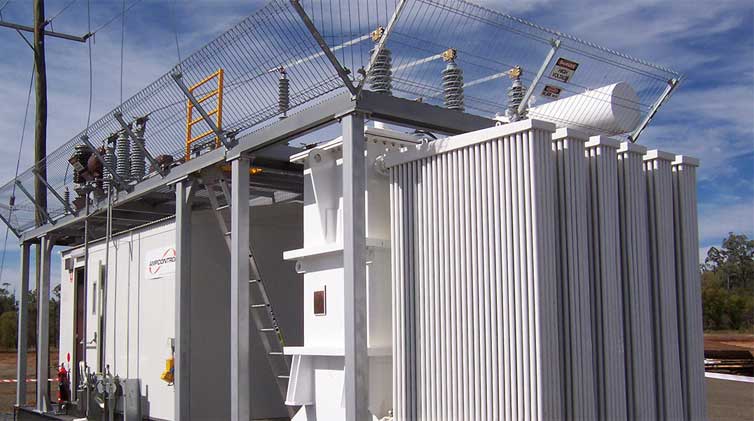The Main Components and Functions of the Transformer
Here are some basic components of a transformer:
(1) Iron core: The core of the transformer is the path of the magnetic flux line, which acts to concentrate and strengthen the magnetic flux and to support the winding.
(2) Winding: The winding of the transformer is the path of current, the current is passed through the winding, and the induced electromotive force is generated by electromagnetic induction.
(3) Fuel tank: The fuel tank is the outer casing of the oil-immersed transformer. The main body of the transformer is placed in the fuel tank, and the tank is filled with transformer oil.
(4) Oil pillow: The oil pillow is also called the auxiliary fuel tank. It is a round barrel made of steel plate and is horizontally mounted on the transformer tank cover. It is connected to the fuel tank by a curved union. One end of the oil pillow is equipped with an oil level indicator. The volume of the oil pillow is generally 8% to 10% of the volume of the oil contained in the transformer tank. Its role is that the inside of the transformer is full of oil. Because the oil level in the oil pillow is within a certain limit, there is room for manoeuvre when the oil expands and contracts at different temperatures, and the small position in the oil pillow makes the oil and air contact less, which reduces the possibility of oil moisture and oxidation. In addition, the oil in the oil conservator is much lower than the oil in the upper part of the tank, and it hardly convects the oil in the tank. A gas relay is installed on the connecting pipe of the oil pillow and the fuel tank to reflect the internal fault of the transformer.
(5) Respirator: The respirator is also the basic component of the transformer. A desiccant or silica gel is contained to absorb moisture from the air.
(6) Explosion-proof pipe: The explosion-proof pipe is installed on the fuel tank cap of the transformer. The top of the explosion-proof tube is fitted with a piece of glass. When a fault occurs inside the transformer, a high pressure is generated, and the gas inside the oil breaks through the glass sheet and is discharged to the outside of the tank to release the pressure, thereby protecting the transformer tank from being damaged.
(7) Thermometer: The thermometer is installed in the side temperature cylinder on the fuel tank cap to measure the temperature of the upper oil in the fuel tank.
(8) Bushing: The bushing is an insulating device that leads the leads of the high and low voltage windings of the transformer to the outside of the tank. It is both the insulation of the lead to the ground (the outer casing) and the role of the fixed lead.
(9) Cooling device: The cooling device is a device that dissipates the heat generated by the transformer during operation.
Oil purifier: It is also called temperature difference filter. Its main part is a cylindrical net oil tank welded with steel plates. It is installed on one side of the transformer tank, which is filled with adsorbents such as silica gel and activated alumina. In operation, due to the temperature difference between the upper oil and the lower oil, the transformer oil flows from top to bottom through the oil purifier to form convection. The oil is in contact with the adsorbent, and the water, acid and oxide are absorbed, so that the oil is purified and the life of the oil is extended. The oil purifier of the strong oil circulation transformer relies on the oil flow pressure difference to make the transformer oil flow through the net oil pump to achieve the purpose of purification. It is therefore also the basic component of a transformer.
Jump to Content Sections
Leave a Message
You May Also Like
 English
English  français
français  Español
Español  русский
русский  العربية
العربية  tiếng việt
tiếng việt  Malay
Malay  Indonesia
Indonesia  বাঙালি
বাঙালি 

